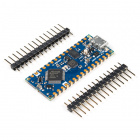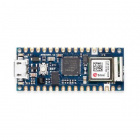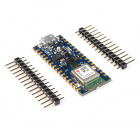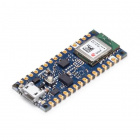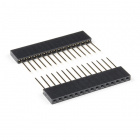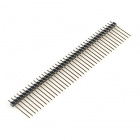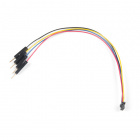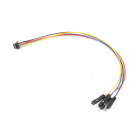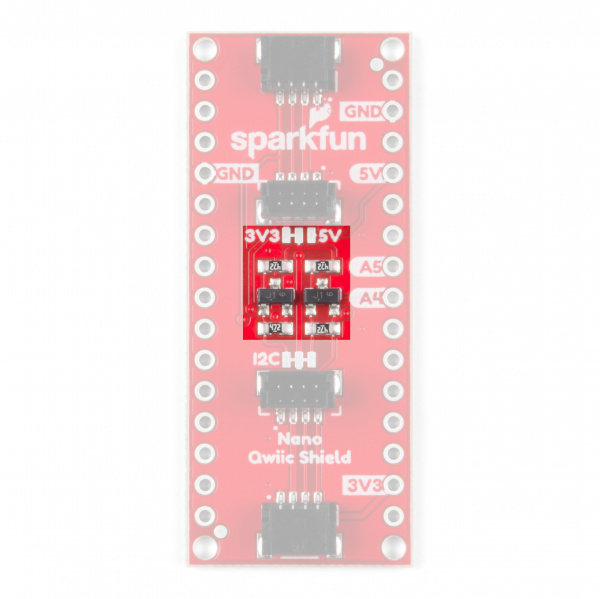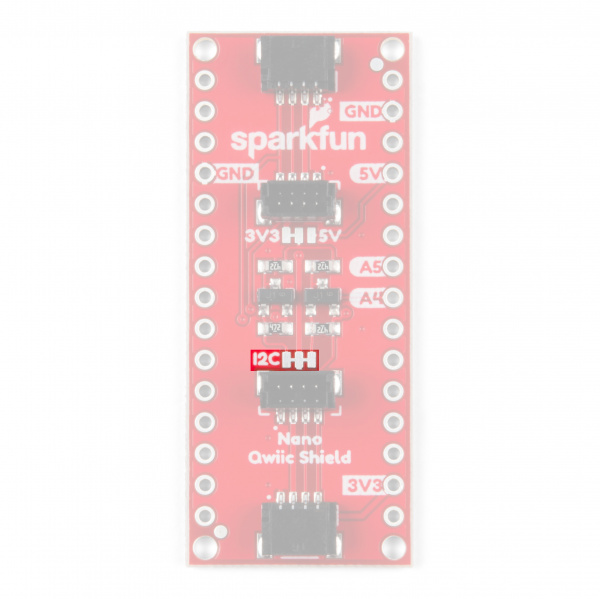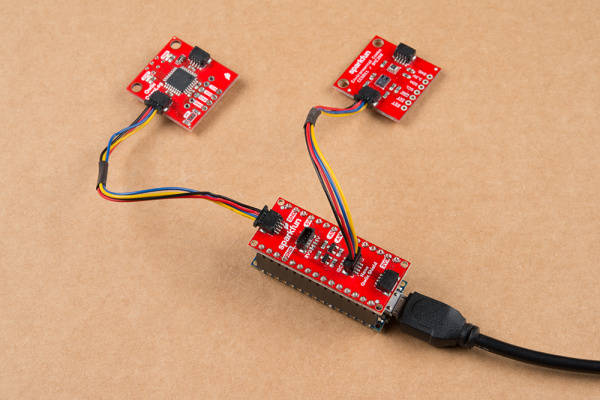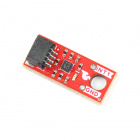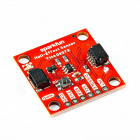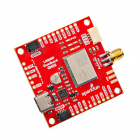SparkFun Qwiic Shield for Arduino Nano Hookup Guide
Introduction
The SparkFun Qwiic Shield for Arduino Nano allows you to add the SparkFun Qwiic ecosystem to development boards that use the Arduino Nano Footprint in an easy-to-assemble shield. It connects the I2C bus (GND, 3.3V, SDA, and SCL) on your Arduino Nano to four SparkFun Qwiic connectors. The Qwiic ecosystem allows for easy daisy chaining so, as long as your devices are on different addresses, you can connect as many Qwiic devices as you'd like.
Required Materials
To follow along with this guide, you will need an Arduino with the Nano footprint. This includes the all variants of the Arduino Nano and many other Arduino Nano-compatible boards! Here are just a few of the compatible boards.
Arduino Nano 33 BLE Sense
DEV-15580Arduino Nano 33 BLE
DEV-15588The shield comes with a set of stackable headers but, if you would prefer to use other headers or another set of stackable headers, here are a few options:
Now you probably would not want the Qwiic Shield for Arudino Nano if you didn't have any Qwiic products to use with it, right? Well, if you don't have any Qwiic products, the following might not be a bad place to start.
You will need some of our Qwiic cables to connect your devices to the shield. Below are a few options:
Qwiic Cable - 100mm
PRT-14427Qwiic Cable - 50mm
PRT-14426Qwiic Cable - 200mm
PRT-14428Qwiic Cable - 500mm
PRT-14429Lastly, if you want to use a non-Qwiic I2C device, these adapters help to convert it to a Qwiic connector:
Qwiic Cable - Breadboard Jumper (4-pin)
PRT-14425Qwiic Cable - Female Jumper (4-pin)
CAB-14988Required Tools
You will need a soldering iron, solder, and general soldering accessories to solder the header pins to the Qwiic shields.
Suggested Reading
If you aren't familiar with the Qwiic ecosystem, we recommend reading here for an overview:
 |
| Qwiic Connect System |
We would also recommend taking a look at the following tutorials if you aren't familiar with them:
How to Solder: Through-Hole Soldering
I2C
Arduino Shields v2
Hardware Overview
The Qwiic Shield for Arduino Nano is pretty straight forward shield but has a few extra bits we'll cover in this section.
Qwiic Connectors
Just like our other Qwiic adapter boards, the Qwiic Shield for Arduino Nano comes with several Qwiic connectors. There are two horizontal Qwiic connectors on the edges of the board and two vertical ones in the center.
Logic Shifting Circuit and IOREF Jumper
The Qwiic Shield for Arduino Nano has a configurable logic shifting circuit depending on the voltage your Arduino Nano runs at. There is a jumper on the shield to set the IOREF voltage for the logic shifting circuit. The jumper defaults to 3.3V which works fine for 33 Nanos like the Arduino 33 Nano BLE but you will need to switch the jumper to 5V for Arduino Nanos that run at 5V like the Arduino Nano Every.
How to Work with Jumper Pads and PCB Traces
I2C Jumper
The I2C jumper pulls the Qwiic SDA and SCL lines up to 3.3V through 4.7K resistors. The reference voltage set by the IOREF Jumper has no effect on the voltage of the pull up resistors. You can disable them by severing the trace in between the pads if you have many devices on your I2C bus.
Board Dimensions
The shield measures 1.7in. x 0.7in. (43.18mm x 17.78mm) and has four mounting holes with a 0.07in diameter that match those on the Nano footprint.
Hardware Assembly
All that is needed to get started using the Qwiic Shield for Arduino Nano is to solder the included stackable header kit or your chosen headers to the shield and, if necessary, to your Arduino Nano. If you have never worked with an Arduino Shield before or need some tips, our Arduino Shields Tutorial provides detailed instructions on how to assemble and use them. Take care to match the markings on the Qwiic Shield to the appropriate pins on your Nano to avoid shorting anything out and possibly damaging your Nano. Also, some variants of the Nano like the Nano 33 BLE Sense have sensors or antennas that can be affected by the Qwiic Shield's placement on top such that you may want to consider placing the Qwiic Shield below your Arduino Nano.
Once you have soldered headers to your shield and connected it to your Nano, it's time to start connecting some Qwiic devices! Below you can see the Qwiic Shield attached to an Arduino Nano Every using some female and male headers with a couple of Qwiic devices attached.
Resources and Going Further
For more information, take a look at the resources below.
If you are having trouble getting your Qwiic devices to connect using your newly assembled Qwiic Shield, you may want to take a look at these tutorials for help troubleshooting and reworking your shield.
Now that you have your Qwiic Shield ready to go, it's time to check out some Qwiic-enabled products. Below are a few to get started.
Before you go, here are some other tutorials using the Qwiic Connect System you may want to look through:

